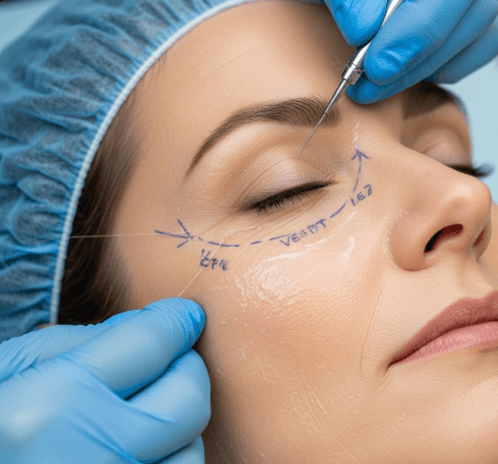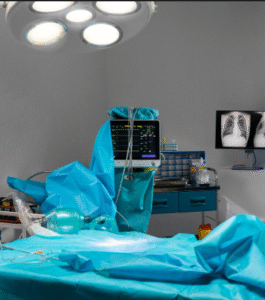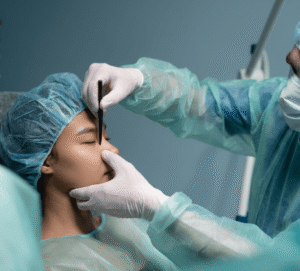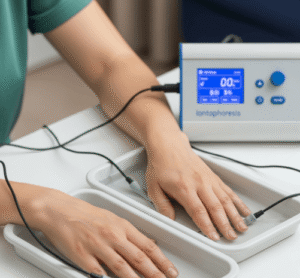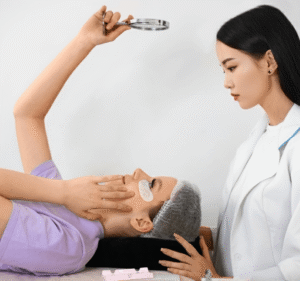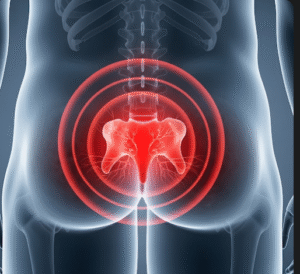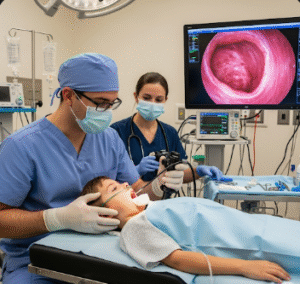What It Is
A Midface Thread Lift is a minimally invasive cosmetic procedure designed to lift and rejuvenate the central area of the face, including the cheeks, nasolabial folds, and under-eye region. This area often shows the earliest and most noticeable signs of aging, such as sagging, hollowing, and deepening smile lines.
The treatment involves inserting biodegradable threads (PDO, PLLA, or PCL) under the skin using fine cannulas. The threads:
- Anchor and lift sagging tissues, repositioning them upward.
- Stimulate collagen, elastin, and hyaluronic acid production, improving skin elasticity and hydration.
- Dissolve naturally over 6–36 months, depending on the thread type, leaving behind a supportive collagen network.
In Korea, midface thread lifts are extremely popular for achieving the “youthful contour” associated with K-beauty ideals — fuller cheeks, softer smile lines, and a smooth under-eye transition.
Why It’s Done
Patients undergo a midface thread lift to restore youthful balance and proportion to the face:
➝ Lift sagging cheeks → Restores natural midface fullness.
➝ Reduce nasolabial folds → Softens deep smile lines.
➝ Improve under-eye hollows → Creates smoother transitions between the eyes and cheeks.
➝ Restore V-line → By repositioning tissue upward, the jawline appears sharper.
➝ Preventative anti-aging → Younger patients (late 20s–30s) use it to maintain midface support before significant sagging occurs.
➝ Non-surgical option → Provides facelift-like improvements without the risks or downtime of surgery.
In Korea, midface rejuvenation is considered essential for youthful appearance, as volume loss and sagging in this area can make the entire face look older.
Alternatives
While midface thread lifts are effective, other treatments may also be recommended:
- Dermal fillers (hyaluronic acid, Sculptra, Radiesse) → Restore volume but do not lift tissues.
- PDO/PLLA/PCL thread lifts in other areas → For jawline, brows, or neck.
- HIFU (Shurink, Ultherapy, Doublo) → Tightens deeper layers (SMAS) but no mechanical lift.
- Thermage FLX (monopolar RF) → Smooths wrinkles and improves superficial tightening.
- Fat grafting → Restores volume but requires downtime.
- Surgical midface lift → Permanent, dramatic results but invasive.
In Korea, midface thread lifts are often combined with fillers or HIFU for maximum rejuvenation:
- Threads + Fillers → Lift plus restored volume.
- Threads + HIFU → Mechanical lift plus SMAS tightening.
- Threads + Rejuran/Exosomes → Collagen stimulation plus skin repair.
Preparation
Preparation helps ensure safety and long-lasting results:
➝ Consultation & imaging → Korean clinics often use 3D scanners to analyze sagging and tissue structure.
➝ Medical history review → Patients disclose any bleeding disorders, implants, or medications.
➝ Avoid blood thinners → Stop aspirin, ibuprofen, and supplements 5–7 days prior (with medical guidance).
➝ No alcohol or smoking → For at least 48 hours before the procedure.
➝ Skincare prep → Stop retinoids, acids, and peels 3–5 days prior.
➝ Numbing → Local anesthesia is administered for comfort.
How It’s Done
A midface thread lift session takes about 60–90 minutes:
- Cleansing & sterilization → The face is thoroughly cleansed.
- Local anesthesia → Numbing injections are given at insertion points.
- Thread insertion →
- Threads (PDO, PLLA, or PCL) are inserted via blunt cannulas.
- Barbed threads anchor into tissues, repositioning sagging cheeks upward.
- Adjustment & lift → The doctor gently pulls threads to create lift.
- Finishing → Threads are trimmed, and cooling packs or LED therapy are applied.
Treatment plan:
- One session → Immediate lift plus collagen stimulation.
- Maintenance → PDO: every 12–18 months; PLLA: every 18–24 months; PCL: every 24–36 months.
Recovery
Recovery is short compared to surgery but longer than non-invasive treatments:
- Immediately after → Visible lifting effect; mild swelling or dimpling possible.
- Day 1–7 → Bruising, tenderness, and tightness common.
- Week 2–3 → Threads settle; dimpling smooths out.
- Month 1–3 → Collagen production improves midface fullness and elasticity.
- Month 6–12 → Best results visible, natural and youthful.
Aftercare tips:
➝ Avoid hard chewing, wide yawning, or exaggerated facial expressions for 1–2 weeks.
➝ Sleep on your back with your head elevated for the first week.
➝ Apply ice packs during the first 24 hours.
➝ Avoid saunas, alcohol, and heavy exercise for 1–2 weeks.
➝ Always apply SPF 50+ sunscreen daily.
Korean clinics usually provide post-treatment creams, antibiotics, and follow-up visits.
Complications
Midface thread lifts are safe but carry some risks:
➝ Bruising, swelling, tenderness → Common, temporary.
➝ Skin dimpling → Usually resolves in 1–2 weeks.
➝ Thread visibility or migration → Rare, corrected by adjustment.
➝ Infection → Very rare, minimized by sterile conditions.
➝ Asymmetry → Prevented by proper facial mapping and expert technique.
Korean dermatologists minimize risks by using FDA/KFDA-approved threads and advanced insertion methods.
Treatment Options in Korea
Korea is a world leader in thread lift technology and practice, especially for midface rejuvenation.
1. Thread Materials Used
- PDO threads → Most affordable, last 12–18 months.
- PLLA threads → Longer-lasting, up to 18–24 months.
- PCL threads → Premium, last 24–36 months.
Final Thoughts
Midface Thread Lift in Korea is one of the most effective minimally invasive procedures for restoring youthful contours. By lifting sagging cheeks, softening smile lines, and improving skin firmness, it provides a subtle yet noticeable rejuvenation.
Korean clinics enhance results by customizing thread types (PDO, PLLA, PCL), combining them with HIFU, Thermage, and injectables, and offering advanced aftercare. For patients seeking a safe, natural, and long-lasting alternative to surgery, a midface thread lift in Korea is among the best choices worldwide.

